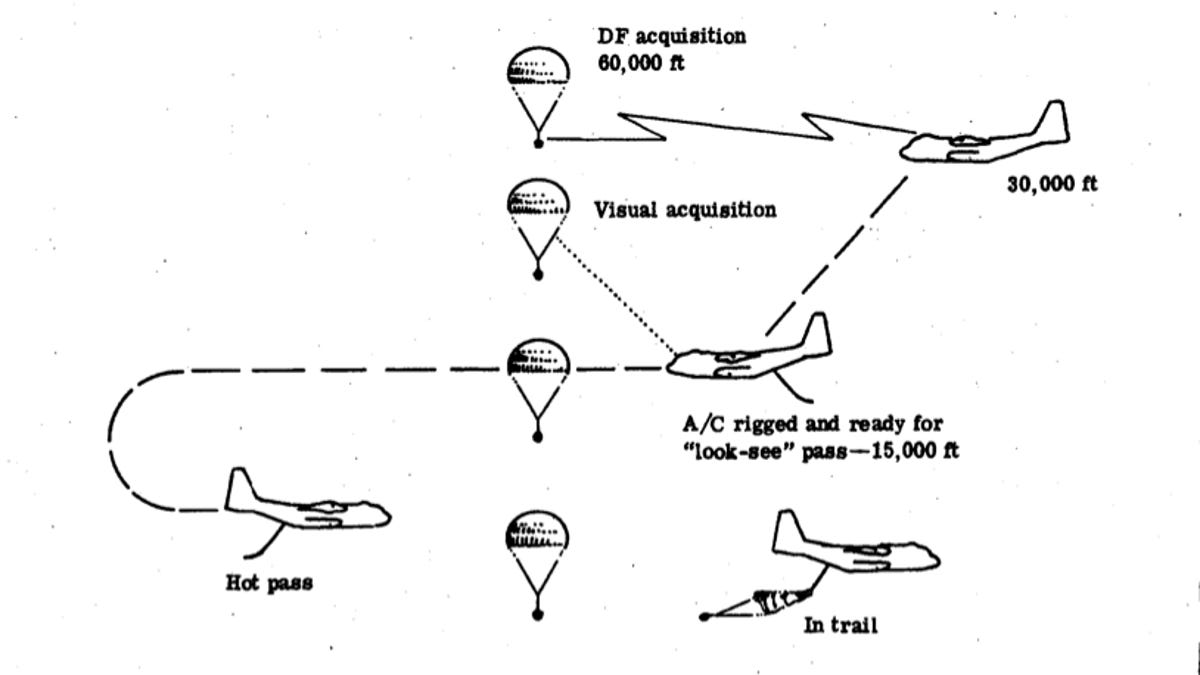Cold War secrets: Spy satellite photos lost at sea, then saved
Photos newly released by the CIA show how the Navy pulled off one of the deepest undersea salvage efforts ever and retrieved spy images of Soviet sub bases and missile silos.

In 1971, the KH-9 Hexagon was the United States' most advanced spy device -- a brand-new photographic reconnaissance satellite as large as a school bus and carrying more than 60 miles of high-resolution photographic film for surveillance missions.
The 6-inch wide Hexagon film frame captured a field of view of about 370 miles, with a resolution of about 2 to 3 feet, according to the National Reconnaissance Office.
Before today's digital technology, the film images were sent back to Earth in recoverable return capsules. Having entered the Earth's atmosphere, the canisters deployed a parachute, and were then snagged by a plane in midair and returned to base for processing and analysis.
On July 10, 1971, the third re-entry vehicle from the first Hexagon photo-satellite mission was lost when the parachute broke, sending the canister into the Pacific Ocean with an impact of about 2,600 G's at about 310 miles per hour. The bucket, crashing into the ocean, sank on impact to a depth of more than 16,400 feet. This was sensitive info -- high-resolution photographs of the Soviet Union's submarine bases and missile silos -- and the decision was made to attempt to recover the valuable intelligence data.
This week, the CIA released documents relating to the spy satellite incident and the recovery mission, including photos of the capsule on the ocean floor, pictures of the Trieste II, and internal cables on how the U.S. Navy undertook one of the deepest undersea salvage efforts ever attempted.

